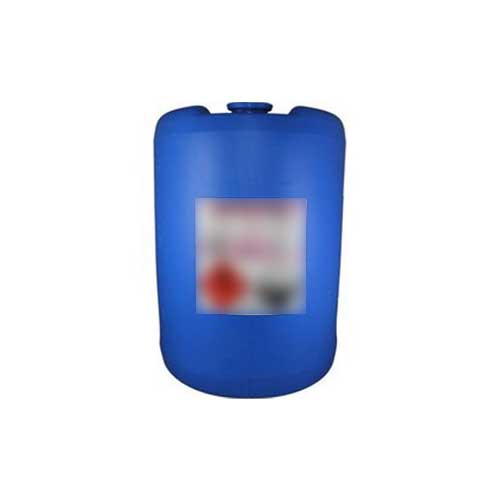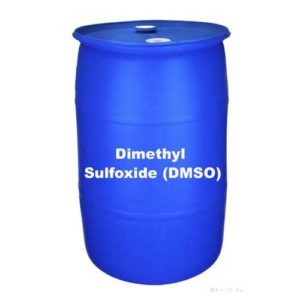N-METHYL-2-PYRROLIDONE-C5H9NO
ABOUT:
The standard method for producing N-Methyl-2-pyrrolidone (NMP) is a process known as amination, which entails the interaction of an aldehyde or ketone with ammonia and a reducing agent. An outline of the production process is provided below:
Preparation of 2-pyrrolidone: 2-pyrrolidone is typically prepared by the reaction of gamma-butyrolactone with ammonia or an amine in the presence of a catalyst. The reaction produces 2-pyrrolidone as well as some byproducts.
Methylation of 2-pyrrolidone: 2-pyrrolidone is then methylated with methyl iodide or dimethyl sulfate in the presence of a base, such as sodium hydroxide or potassium carbonate. The reaction produces N-methyl-2-pyrrolidone and a salt byproduct.
Purification: The crude NMP is then purified through a distillation process to remove impurities and byproducts.
PHYSICAL PROPERTIES:
Molecular weight: 99.13 g/mol
Density: 1.03 g/cm³ at 20°C
Boiling point: 202°C
Melting point: -24°C
Flash point: 93°C (closed cup)
Viscosity: 1.95 cP at 20°C
Vapor pressure: 0.15 mmHg at 25°C
Refractive index: 1.467 at 20°C
CHEMICAL PROPERTIES:
- NMP is a weak acid and can act as a proton donor in certain reactions.
- NMP is a weak base and can act as a proton acceptor in certain reactions.
- NMP can react with various nucleophiles and electrophiles, making it a versatile solvent in organic synthesis.
- NMP is a relatively stable compound that does not readily decompose under normal conditions.
- NMP is highly soluble in polar solvents such as water and can dissolve a wide range of organic compounds.
- NMP can act as a reducing agent in certain reactions, such as the reduction of carbonyl groups to alcohols.
- NMP can undergo polymerization in the presence of strong bases or acids, leading to the formation of long-chain polymeric compounds.
- NMP can undergo hydrolysis in the presence of water or aqueous acids, leading to the formation of N-methyl-2-pyrrolidone and other byproducts.
APPLICATIONS:
PHARMACEUTICAL INDUSTRY:
- NMP is used as a solvent for the synthesis of various drugs and pharmaceutical intermediates, including antibiotics, anti-inflammatory drugs, and antiviral drugs.
- NMP is used in the development of drug delivery systems, such as liposomes and microspheres.
- The formulation of medications, including topical creams, gels, and transdermal patches, uses NMP as a solvent. It is the perfect option for drug formulation because it can dissolve a wide variety of active pharmaceutical ingredients (APIs) and excipients.
ELECTRONICS INDUSTRY:
- In the semiconductor sector, NMP is used as a photoresist stripper. It is the perfect choice for usage in the production of integrated circuits and other electronic components since it can dissolve photoresists without harming the substrate underneath.
- Adhesives, sealants, and conformal coatings are just a few of the coatings that NMP is used to dissolve in the electronics industry.
- NMP is a solvent used in the production of lithium-ion batteries for the electrode coating.
- NMP is used as a solvent for the synthesis of various polymers used in electronic components, including polyimides and polyurethanes.
POLYMER INDUSTRY:
- Polyesters and polycarbonates, among other polymers, are recycled using NMP as a solvent. The polymer can be effectively recovered and reused since it can dissolve and separate from other components.
- Ultrafiltration and reverse osmosis membranes, among others, are produced using NMP as a solvent. The polymers used to make membranes can be dissolved and dispersed, enabling the creation of high-quality membranes with exact pore diameters and selectivity.
AGROCHEMICAL INDUSTRY:
- NMP is used as a solvent in the formulation of various pesticides, including herbicides, insecticides, and fungicides.
- In the agrochemical sector, natural goods like plant extracts and essential oils are extracted using NMP.
- Equipment used in the production of agrochemicals, such as reactors, mixing tanks, and filters, are cleaned using NMP.
COATINGS INDUSTRY:
- NMP is used as a paint stripper to remove paint and coatings from surfaces, including metal, wood, and concrete.
- Polyurethane and epoxy coatings, among others, use NMP as a curing ingredient.
- NMP is used to prepare surfaces before applying coatings. It can remove and dissolve impurities from surfaces, including rust, grease, and oil, improving coating adherence and performance.
OIL AND GAS INDUSTRY:
- In gas sweetening procedures, NMP is employed as a solvent to take carbon dioxide (CO2) and hydrogen sulphide (H2S) out of natural gas streams. It can effectively remove H2S and CO2 from natural gas because it can selectively dissolve them.
- In oil refining procedures such as the creation of lubricating oil, wax dewaxing, and solvent deasphalting, NMP is employed as a solvent.
- NMP is a solvent used in pipeline cleaning procedures to get rid of scale, wax, and asphaltene deposits from oil and gas pipes.
- In hydraulic fracturing operations, NMP is employed as a component of the fracturing fluids.
CLEANING:
- NMP is used as a solvent in industrial cleaning applications to remove various contaminants, including grease, oil, and rust, from machinery and equipment.
- In order to clean electronic components and circuit boards of flux residues and other impurities, NMP is employed as a solvent.
- Epoxy, polyurethane, and acrylic paints are just a few of the coatings that can be removed from surfaces using NMP as a solvent.
- While cleaning pharmaceutical equipment and containers, NMP is employed as a solvent to get rid of residues, including medications and excipients.
SAFETY MEASURES:
- Personal protective equipment (PPE): Wear appropriate PPE, including gloves, safety glasses, and a lab coat, when handling NMP. Avoid skin contact, inhalation, or ingestion of the solvent.
- Ventilation: Use NMP in a well-ventilated area or under a fume hood to minimize exposure to vapors. NMP has a low odor threshold, so it is important to prevent inhalation of the solvent.
- Handling and storage: Store NMP in a cool, dry, well-ventilated area, away from sources of heat, sparks, or flames. Avoid contact with oxidizing agents, acids, and alkalis. Use appropriate containers to store and transport NMP.
- Spill and leak response: In case of a spill or leak, contain the solvent using absorbent material and prevent it from spreading. Dispose of the contaminated material and clean the spill area using appropriate procedures.
- Hazard communication: Ensure that workers handling NMP are trained on the hazards associated with the solvent and are familiar with the safety measures to be followed.
- Regulatory compliance: NMP is regulated by various agencies, including the Occupational Safety and Health Administration (OSHA) and the Environmental Protection Agency (EPA). Ensure compliance with regulatory requirements and obtain necessary permits before using NMP.





Reviews
There are no reviews yet.